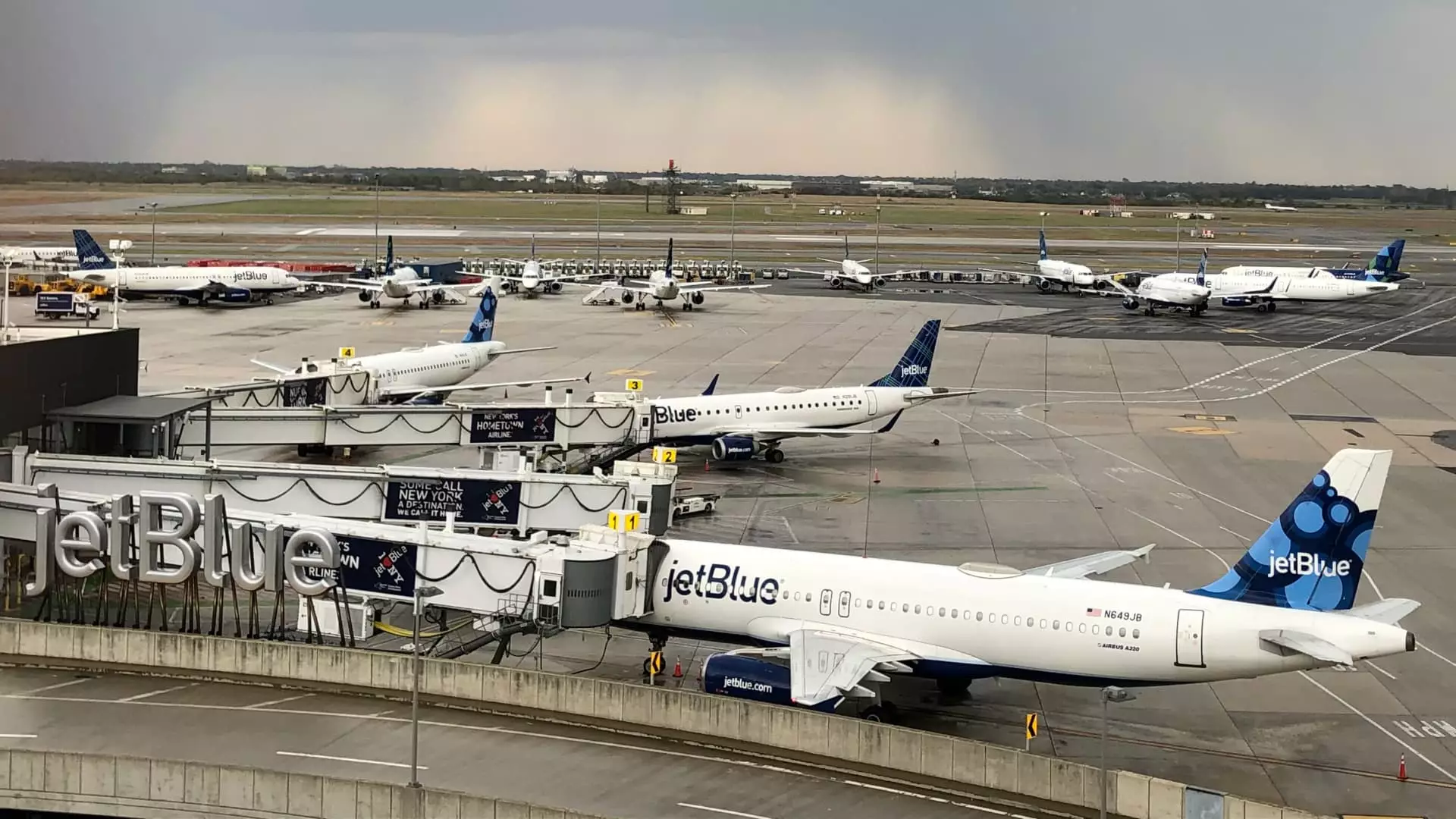JetBlue Airways is embarking on an ambitious transformation, marking a significant shift in its service offerings by introducing airport lounges for the first time in its 23-year history. Historically known for its low-cost fare structure, JetBlue is now aiming to attract high-spending customers, a move that reflects the evolving dynamics of the airline industry. By establishing lounges at key hubs—New York and Boston—the airline is not just augmenting its service portfolio but is also contemplating a broader strategy to enhance its profitability and customer experience.
Set to open in late 2024, JetBlue’s lounges promise to be welcoming oases for travelers. The New York lounge will span 8,000 square feet in Terminal 5 at John F. Kennedy International Airport, while the Boston lounge will be a more expansive 11,000 square feet in Terminal C at Logan International Airport. These spaces are designed to provide a premium experience, complete with amenities such as cocktail and espresso bars, light dining options, and dedicated areas for work. This move illustrates JetBlue’s intention to blend affordability with a touch of luxury, a tactic often employed by its larger rivals.
Despite the allure of lounges, JetBlue is being cautious in its rollout. Access will initially be restricted to Mint business class passengers flying internationally, holders of a new premium credit card partnered with Barclays, and top-tier frequent flyers. This strategy minimizes the risk of overcrowding and ensures a more exclusive atmosphere for guests, a factor that could enhance customer satisfaction and loyalty.
The introduction of airport lounges is not just a spontaneous decision for JetBlue; rather, it is a calculated response to industry trends. Major airlines like Delta, American, and United have made substantial investments in their lounges, leveraging them as a key differentiator in a fiercely competitive market. Delta’s recent opening of its first Delta One lounge at JFK exemplifies this trend, targeting high-tier travelers and enhancing the overall travel experience.
Moreover, credit card companies have entered the fray by launching their own lounge experiences, further setting a benchmark for customer expectations. By aligning itself with this trend, JetBlue hopes to elevate its brand image and attract a demographic willing to spend more in exchange for exclusive perks.
For JetBlue, the move toward premium services is also about financial viability. After grappling with the aftermath of the pandemic, including route cuts and deferrals on new aircraft, the carrier has been navigating a route toward profitability. The new premium credit card not only serves to bolster lounge access but also taps into the lucrative credit card market—a strategy that has proven beneficial for many airlines. By capitalizing on these financial networks, JetBlue aims to enhance revenue streams and fortify its market position.
The emphasis on attracting high-value passengers is vital as the airline industry continues to rebound. As travelers return to the skies with greater expectation for comfort and conveniences, airlines directly responding to these demands stand to gain significantly.
JetBlue’s pivot towards opening airport lounges symbolizes the airline’s commitment to evolving within a competitive landscape and enhancing passenger experience. By embracing strategies that include premium offerings and partnerships with credit card companies, JetBlue is not only hoping to solidify its financial footing but also to create lasting customer loyalty. This thoughtful approach, while mindful of operational limitations such as space and access, positions JetBlue as a forward-thinking airline in an industry that is rapidly changing. As the airline prepares to roll out these new services, it remains to be seen how effectively it can bridge the gap between low-cost carrier and premium service provider, a transition that could reshape its future trajectory.

Leave a Reply